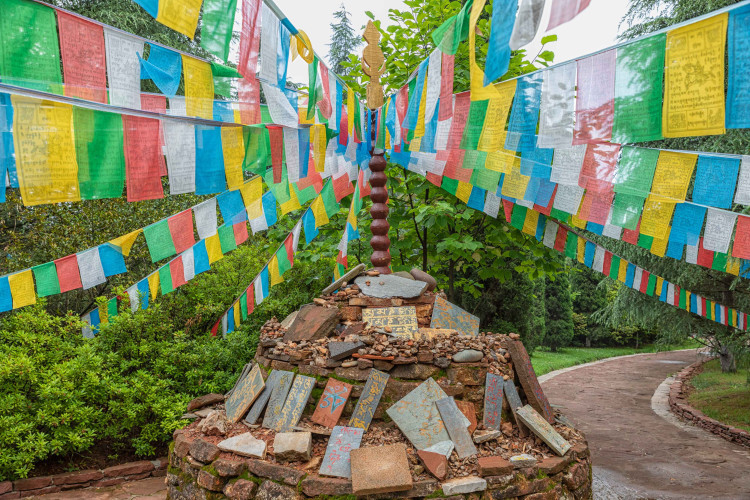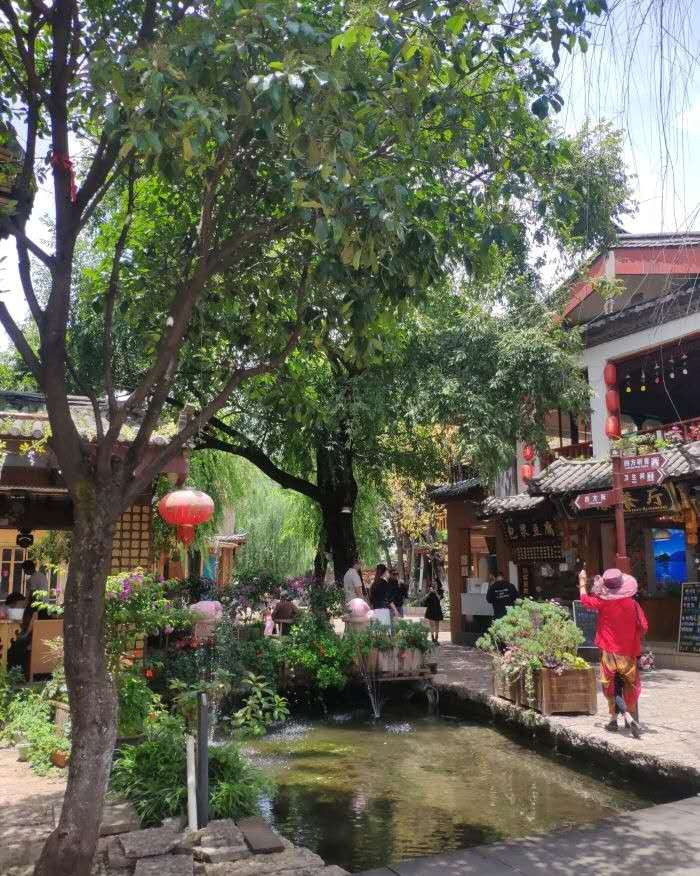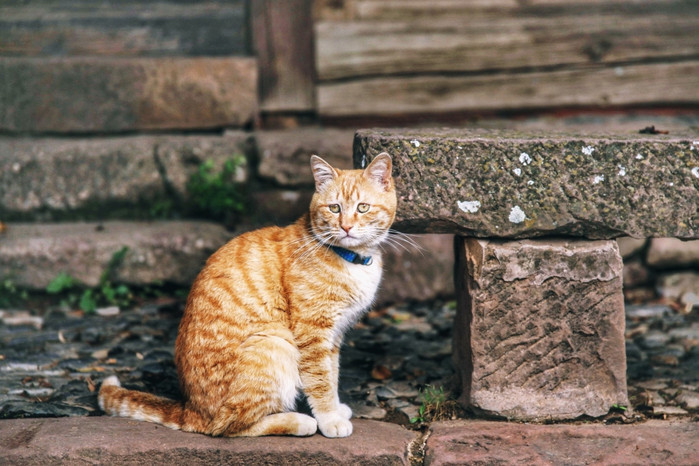Give me a reason to forget, you who love me so much-Lijiang, Dali
Are you not satisfied with life?
I haven't laughed for a long time, and I don't know why
Since you are unhappy and don't like it here,
Why not go west to Dali
The journey is a little bumpy and the air is thin
The wider the scenery, the lonelier the heart
I don't know who is waiting and where
I don't know what happened later...
In southwest China, there are two places that I have always longed for-Lijiang and Dali. They are all located in our country's Yunnan Province. For many years, they have been like a pair of sisters wandering around the long scroll of this country's history and seem to be particularly out of place. You can't find a city that feels like these two anywhere else in the country. There are ancient tribes and traditions, long history and culture, beautiful mountains and clear lakes. There are also beautiful and touching stories!
Kunming
Starting from Guangzhou and landing in Kunming, my first stop came to Kunming University. Eating local hot pot with friends in Kunming ~ When it comes to hot pot, the first thing people think of is Sichuan hot pot. In my opinion, Yunnan hot pot is more down-to-earth. Because Yunnan's hot pot uses earthen pots. The earthen pot does not use metal hot pot, but only uses fired earthen pot. It pays attention to slow cooking, so the dish tastes fresh and sweet.

Yunnan Ethnic Village covers an area of 1,264.96 acres, including a water area of 463.96 acres. It gathers the villages of 25 ethnic minorities in Yunnan, including Dai, Bai, Yi, Naxi, Wa, Bulang, Jino, Lahu, Tibetan, Jingpo, Hani, De 'ang, Zhuang, Miao, Shui, Nu, Mongolian, Buyi, Dulong, Susu, Pumi, Manchu, Hui, Yao, and Achang, ethnic song and dance halls, ethnic squares, Yunnan Ethnic Museum, laser fountains, water curtain movies and other tourist facilities. Ethnic villages use restoration and display techniques to display Yunnan's ethnic customs. Walking into the village, I saw different styles of ethnic villages distributed in it, each showing its charm. The colorful village buildings, production, life, and religious customs of various ethnic minorities are truthfully displayed, which is a microcosm of Yunnan's ethnic culture.
Yunnan Minzu Village is located in Kunming Dianchi National Tourist Resort, located in the south of Kunming City, on the north bank of Dianchi Lake (a long and narrow peninsula beach that enters Dianchi Lake from east to west). It covers an area of 20,000 acres and has natural bathing baths and sports training bases. It faces Xishan Forest Park, Daguan Park, Zhenghe Park and other scenic spots across the water. There is a cableway connecting Longmen in Xishan, 10 kilometers away from the urban area.

Lijiang ancient city
The Ancient City of Lijiang is located in Ancient City, Lijiang City, Yunnan Province, also known as Dayan Town. It is located in the middle of Lijiang Dam. It was built in the late Song Dynasty and early Yuan Dynasty (late 13th century AD). It is located on the Yunnan-Guizhou Plateau, covering an area of 7.279 square kilometers.
The streets in the ancient city of Lijiang are built around mountains and rivers and paved with red breccia. They include Sifang Street, Mufu, Wufenglou, Black Dragon Pool, Wenchang Palace, Wang Pizhen Memorial Hall, Xueshan Academy, Wangjiazhuang Christian Church, Fang Guoyu's former residence, Baima Longtan Temple, Gu Peter's former residence, Jinglian Temple, Puxian Temple and other scenic spots. Lijiang is one of the second batch of approved historical and cultural cities in China. It is one of the two ancient cities in China that have successfully declared the entire ancient city for a World Cultural Heritage.
The ancient city of Lijiang has colorful local ethnic customs and entertainment activities, such as Naxi ancient music, Dongba rituals, divination culture, ancient town bars and Naxi Torch Festival, which are unique. The ancient city of Lijiang embodies the achievements of ancient Chinese urban construction and is one of the types of Chinese folk houses with distinctive characteristics and styles.








Shuhe ancient town
Shuhe Ancient Town, known as "Shaowu" in Naxi language, is called "Shaowu" in Naxi. Because the mountains behind the village are like peaks, it is named after the mountains. It means "village under the peak". It is the earliest settlement of Naxi ancestors in Lijiang Bazi.
Shuhe Ancient Town is located at 26 degrees 55 minutes north latitude and 100 degrees 12 minutes east longitude. It is at the core of all scenic spots in Lijiang and is the hub for visiting the Ancient City of Lijiang, Yulong Snow Mountain, Lugu Lake, the First Bay of the Yangtze River and the Three Parallel Rivers Scenic Area. Shuhe Ancient Town is an important well-preserved market town on the ancient tea-horse road. It is also a living specimen of the transition of Naxi ancestors from farming civilization to commercial civilization. It is a model of market town construction formed by opening up to the outside world and horse gang activities. Shuhe is an important part of the ancient city of Lijiang, a world cultural heritage. In 2005, it was selected as CCTV's "Famous Charming Town in China".





There is a Naxi specialty food restaurant in Shuhe Ancient Town that serves Naxi specialty food. Everyone must try it if you have the opportunity. The Naxi food made here is very delicious. Many stars come to this restaurant to eat Naxi food when they come to Lijiang. It is very popular. The food tastes good, the environment is good, the service is good, and the price is affordable. No wonder it is so popular!







Dali ancient city
The ancient city of Dali is located in the northwest of Yunnan Province, at the southern end of the Hengduan Mountains, under Cangshan Mountain and on the coast of the Erhai Lake. Its center is located at 25°41 '26 "north latitude and 100°9' 45" east longitude. The ancient city covers an area of 3 square kilometers. The ancient city of Dali is located in the Erhai Fault Basin. The surface is mostly covered by proluvial alluvial deposits, which slopes slowly from west to east. It is an alluvial lacustrine plain with an average altitude of less than 2000 meters. The terrain of the ancient city of Dali is low in the east and high in the west.




The ancient city of Dali is one of the most outstanding areas with human cultural heritage. It is located on the border and has a strong ethnic culture. It is one of the first batch of 24 historical and cultural cities announced by the country. Its "integration of man and nature" landscape creation method and traditional urban landscape planning and construction ideas are of great significance to the construction of modern Chinese architecture.


The ancient scenery creation experience of the ancient city of Dali belongs to the unique modern Chinese urban scenery creation. It integrates the natural environment and the artificial environment to form a leisurely and leisurely urban characteristic, making China's landscape pattern national and regional. As one of the inhabited areas of ethnic minorities, the ancient city of Dali is a place where Bai cultural resources are enriched and multi-ethnic cultures are integrated and developed. Central Plains culture, foreign culture and local culture collide and communicate here, forming the splendid Nanzhao Dali culture and distinctive Bai culture. Culture, showing a strong ethnic customs and a bright cultural landscape, its colorful ethnic culture can provide materials for creating garden characteristic landscapes.







Erhai Lake
Erhai Lake, once known as Ye Yuze, Kunmichuan, Xierhe River, Xierhe River, etc. in ancient documents, is located on the outskirts of Dali, Yunnan and is the second largest freshwater lake in Yunnan Province. The Erhai Lake starts from Eryuan in the north and is about 42.58 kilometers long. The largest width from east to west is 9.0 kilometers. The lake surface area is 256.5 square kilometers. The average lake depth is 10 meters, and the largest lake depth is 20 meters. There are two water outlets in the Erhai Lake: 1. Near Xiaguan Town, it flows out through the Xier River;2. "Introduce Er to the guest." Erhai Lake is the location of "Erhai Moon", one of Dali's four scenic spots. It is said that it is named "Erhai" because it is shaped like an ear. Erhai Lake has excellent water quality and rich aquatic resources. It is also a scenic spot with winding scenery. Although the Erhai Lake is called the sea, it is actually a lake. It is said that because Yunnan is deeply inland, the Bai people call it the Erhai Lake to express their yearning for the sea.


The tourism landscape highway around the Erhai Lake is 115 kilometers long. It is an important measure for Dali to develop rural tourism resources, create characteristic tourist villages around the Erhai Lake, and cultivate rural characteristic leisure and vacation tourism products. It is also a successful example of using tourism to coordinate urban and rural development and promote the construction of new rural areas. The total investment of the tourism landscape highway around Erhai Lake is 165 million yuan, involving five towns: Xizhou, Wanqiao, Yinqiao, Dali and Xiaguan. This is also a sacred place for wedding photos.









Dali ancient city
Who has no dust on his head?
Who hasn't had teeth marks on their shoulders?
Maybe love is waiting by the Erhai Lake
Maybe a story is happening
Who has no dust on his head?
Who hasn't had teeth marks on their shoulders?
Maybe love is waiting by the Erhai Lake
Maybe a story is happening
Who has no dust on his head?
Who hasn't had teeth marks on their shoulders?
Pick up the courage crushed by time
Let your feet be covered with fragrant mud...








Previous Article:Cultural Heritage-Lijiang Travel Notes
Next Article:I am in Lijiang, waiting for you in my slow time
